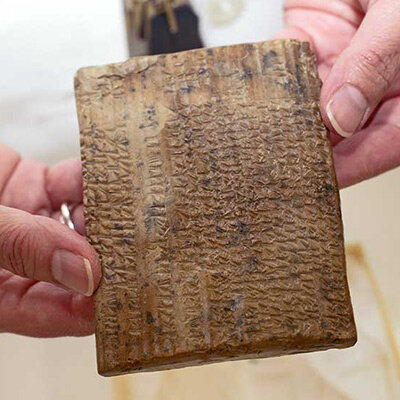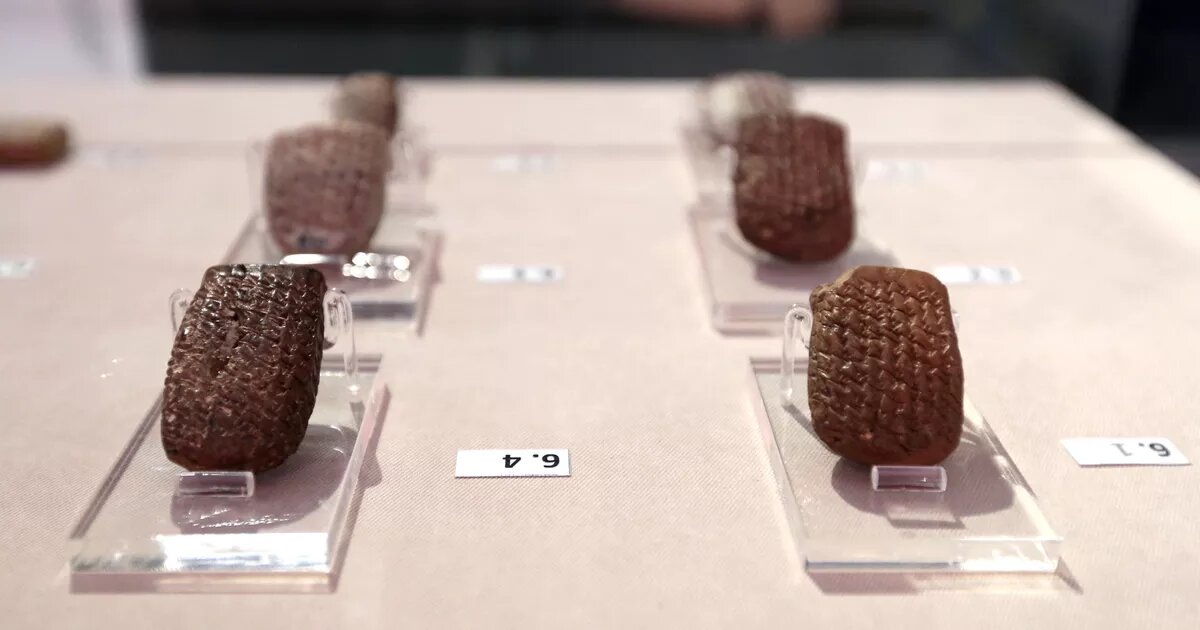Achaemenid tablets recovered from U.S.: when will they be unveiled?

TEHRAN - More than two months have passed since the recovery of 3506 Achaemenid tablets, and the time for their unveiling has not yet been determined. However, the director of the National Museum of Iran announced their imminent display in this museum soon.
It was late in September that 3506 Achaemenid tablets were returned to Iran after nearly 90 years, accompanying the President's plane.
The treasured tablets were returned home by the plane carrying President Ebrahim Raisi, who addressed the 78th session of the United Nations General Assembly during his visit to New York.
These clay tablets were part of a larger shipment discovered at Persepolis in 1311, which was entrusted to the Oriental Institute of Chicago for deciphering and study.
Out of over 30,000 pieces held by the Chicago Institute for study and deciphering, five shipments have been returned to Iran in the Iranian years 1327 (1948-49), 1330 (1951-52), 1383 (2004-05), 1398 (2019-2020), and 1402 (2023-24), ISNA reported.
Yet, portions of these tablets still remain at the institute. Ezzatollah Zarghami, the Minister of Cultural Heritage, Tourism, and Handicrafts, had previously mentioned the process of returning the remaining tablets, stating that the groundwork for their return has been laid out. “According to an agreement made by the Americans, our experts will go to that country to verify the remaining tablets, after which they will gradually be returned to Iran.”
However, the fifth shipment, arriving in Iran on September 21 this year, consisted of 836 small tablets in Aramaic script and 2670 large tablets in Elamite script. They were shipped in nine boxes each weighing 75 kg. They were ultimately delivered to the National Museum of Iran.
It was planned that after quarantine, inspection, and study, some of these tablets would be put on display. Jebrael Nokandeh, the director of the National Museum of Iran, responding to ISNA regarding the timing of their display, stated: “It will be showcased soon.”

He had previously mentioned the possibility of showcasing the Achaemenid tablets during Research Week (Dec. 16 to 20), but upon ISNA's follow-up, he responded: "The time for display (of the fifth shipment of recovered Achaemenid tablets) is approaching."
Studies conducted thus far on the Achaemenid clay tablets indicate that their content encompasses the administration and upper echelons of society during that historical period.
Archaeologists affiliated with the University of Chicago discovered the tablets in the 1930s while excavating in Persepolis, the ceremonial capital of the Persian Empire. However, the institute has resumed work in collaboration with colleagues in Iran, and the return of the tablets is part of a broadening of contacts between scholars in the two countries, said Gil Stein, director of the Oriental Institute at the University of Chicago.
They are very important sources of information revealing economic, social, and religious data about the Achaemenid Empire (550-330 BC) and the larger Near Eastern region in the fifth century BC.
Persepolis, locally known as Takht-e Jamshid, was the ceremonial capital of the Achaemenid Empire. It ranks among the archaeological sites, that have no equivalent, considering its unique architecture, urban planning, construction technology, and art.
Narratives say that Persepolis was burnt by Alexander the Great in 330 BC apparently as revenge against the Persians because it seems the Persian King Xerxes had burnt the Greek City of Athens around 150 years earlier. It was the largest and most durable empire of its time, stretching from Ethiopia, through Egypt, to Greece, Anatolia (modern Turkey), Central Asia, and India at its height.
AFM
